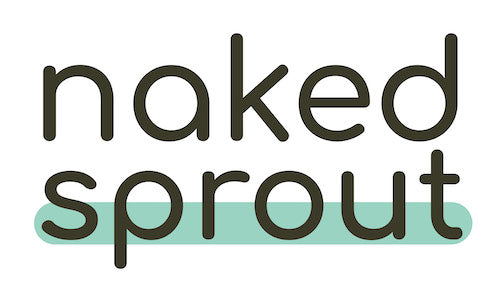Is Dyeing Toilet Rolls Bad for the Environment?

Naked Sprout started with a pink roll. Actually, it started with two of them - our founders Tom and Leila were travelling through France, and noticed bright pink toilet rolls in two separate bed and breakfasts, miles apart. It was like they were being followed!
The coincidence made them laugh and got them thinking about how white, bleached rolls aren’t actually more natural than pink ones. Much testing and development later we have our unbleached rolls from Naked Sprout.
But this isn’t the normal way of doing things. Most other companies bleach their rolls and many wrap them in brightly coloured, dyed paper. We think this is a waste, for products that are going to be flushed down the loo. We’ve already covered bleach on our blog, and today we’re tracking all the way back to those pink rolls.
Where do the dyes used in products and packaging come from, and is dye bad for the environment? Let's find out.
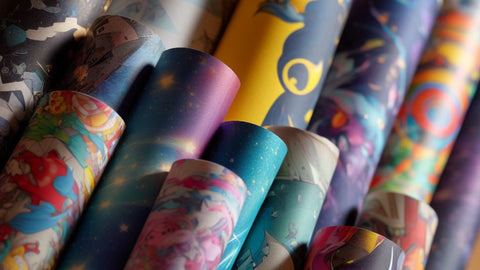
Dyes in History
Humans are drawn to decoration. Dye has been used to decorate skin, fabric, wood, and pottery since at least the late stone age, and we have ample evidence of extensive uses of dyes in the ancient civilizations of Egypt, China, and Minoa.
Early dyes were derived from natural sources such as plants, minerals, and insects. The dyes that were the easiest to make were used the most. A great example is woad - a plant originally native to the Mediterranean region that grows so plentifully and easily it’s often classified as a weed. Woad produces a deep blue dye that was used in pottery, weaving, and tattoos around the ancient world. Red was also easy to produce as it could be derived from the plant madder, which grows all over Asia, Europe, and Africa.
So red and blue and red dyes were popular because they were easy to make from plant sources that grew abundantly. Their popularity was enhanced by the fact that, once applied, they stayed relatively fade free. If you’ve ever wondered why so many flags have colours of red, white, and blue, this is why!
The invention of synthetic dyes in the 19th century revolutionised the way we colour our world, allowing for a wider range of pigments and greater ease of production. Chemists like William Perkin, who accidentally discovered the first synthetic dye, mauveine while working on a treatment for malaria, opened the door to a new era of dye production. Synthetic dyes could be made cheaply and fixed well without fading, so they quickly became popular for colouring fabrics and ceramics, and in the production of paint.
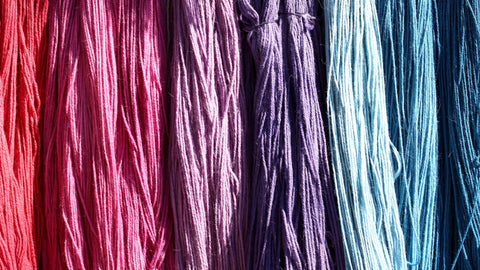
Sourcing and Manufacturing of Dyes
In the modern world, we’ve got a lot more options than woad and madder. Most of the dyes that surround us today are made in factories using chemical processes. So what is the environmental impact of all this colour?
When it comes to the pollution associated with dyes and pigments, one important thing to understand is that not all colours are equal. Although dyes are made in laboratories now, they rely on organic compounds derived from nature. So reds and blues, even today, take less processing to produce and to apply than complex colours rarely found in nature.
Black dyes are at the other end of the pollution spectrum. To make black you have to mix many different pigments together and chemically fix them in place, a level of complexity that multiplies the pollution. Gold is another shade to watch out for - gold does of course occur in nature, in the precious metal of the same name. But few companies are using actual gold to colour their products, and if they were you’d know about it from the price tag! So metallic paints will incorporate tiny particles of metals such as bronze or copper, or the mineral mica, to reflect the light, and an intensive chemical process is required to bind and fix these elements.

Once dye has been produced, it must be applied. Industrial dyeing methods often involve large volumes of water, energy, and chemicals, leading to wastewater pollution and high greenhouse gas emissions. Dyeing processes can also contribute to air pollution through the release of volatile organic compounds (VOCs), that can cause a range of minor and much more serious health problems.
As manufacturers and consumers become more aware of the damaging impact of dyes and pigments, efforts have been made to develop more environmentally friendly processes. Techniques have been developed for dying without water, for example, and there’s a growing market for more eco-friendly dyes derived from natural sources.
But these alternatives often come with their own set of challenges; they often cost more than mass-produced synthetic equivalents, and the range of colours you can make is limited. And even when you are making the most natural, easily produced colours, there is an environmental cost to using them on an industrial scale.
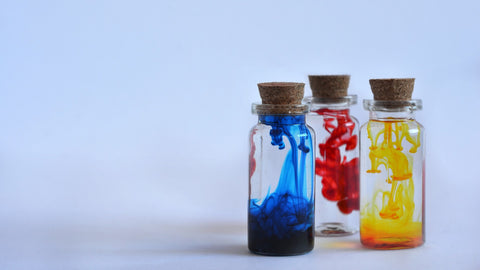
The Pink Roll Example
Let’s go back to the pink toilet rolls. We haven’t been able to find out the exact dye used for the “pinking” process but most pink dye used today comes from the cochineal insect and it’s relatively cheap to produce. Blue would be another option for a cheap dye, or we could also bleach our rolls, maybe using the Total Chlorine Free method favoured by more environmentally-minded brands.
But whatever we are using to colour the rolls, the synthetic dye or bleach has to be produced using energy, most likely fossil fuels. Then it must be packaged in single use containers (probably plastic) and transported to the tissue factory. Once it’s at the factory the stage of dying or bleaching the pulp will require yet more energy, as well as huge amounts of water, and any other chemical agents needed to fix the dye or process the bleach.
If this was a company who were also wrapping our rolls the wrapping would also be dyed. If they were using unnatural colours in their wrapping like black or gold the environmental harm would really start piling up.
The result of all of this is packaging pollution, road miles, CO2e emissions, and chemical pollution that is simply not necessary for a product that is going to be flushed away.
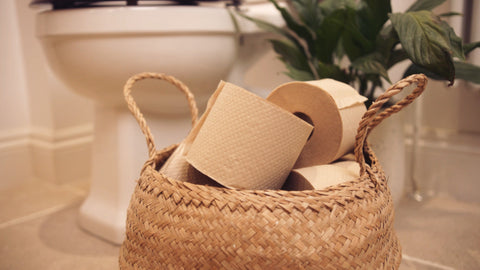
The Bottom Line
Hopefully this has been an eye-opener! We think it’s really worth taking a moment to look at the colours in the environment around you. Which are natural, which have been applied commercially, and where are the colours rare in nature that are most likely to be polluting?
At Naked Sprout we believe the colours of nature can stand on their own, particularly when it comes to a disposable product. So we don’t bleach or dye our toilet rolls, tissues, or kitchen rolls, and we keep the printing on our cardboard boxes as minimal as possible, using inks derived from soy.
We know that this might hamper our efforts at marketing - bright colours and attractive wrapping have become a central to the identity of many other rolls, and make for eye-catching adverts on billboards and social media. But nature is a riot of colour, and if we want to do everything we can to protect it.
Want to try tissue products with a naturally neutral palette?
